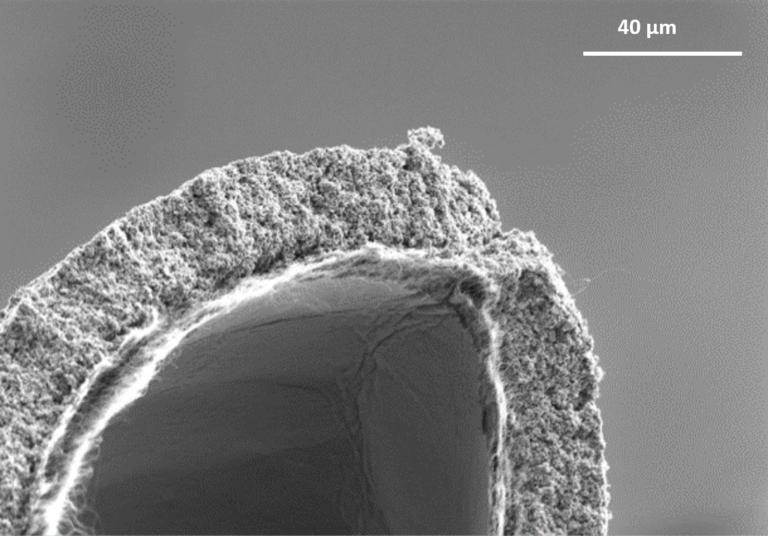The forth research area deals with the study of combined properties of nanostructured networks leading to multifunctional applications. The group is particularly interested in the overlap between mechanical properties and energy storage. In the past, it has developed methods to produce a range of flexible, tough electrodes by eliminating metallic current collectors. It has also produced structural power composites, i.e., combining load-bearing properties with energy storage functions (Figure 4). At the materials level, the aim is to better understand the role of damage tolerance in electrochemical cyclability. Additional areas of interest are the use of pierzoresistive nanostructured networks for chemical and strain sensing in structural composites.


Figure 4. Multifuctional materials.
Selected references
Nicola Boaretto, Jesús Almenara, Anastasiia Mikhalchan, Rebeca Marcilla, and Juan José Vilatela – A Route to High-Toughness Battery Electrodes. acs applied energy materials 2, 8, 5889-5899, 2019. DOI: DOI:10.1021/acsaem.9b00906
Cleis Santos, Inés V.Rodríguez, Julio J. Lado, María Vila, Enrique García-Quismondo, Marc A. Anderson, Jesús Palma, Juan J.Vilatela – Low-energy consumption, free-form capacitive deionization through nanostructured networks. carbon 176, 390-399, 2021. DOI: 10.1016/j.carbon.2021.01.148
Yunfu Ou, Moumita Rana, Juan José Vilatela, Carlos González – Assessment of stress transfer in laminated structural power composites produced with mechanically-connected electric double-layer capacitors. composites science and technology , 109128, 2021. DOI: 10.1016/j.compscitech.2021.109128


